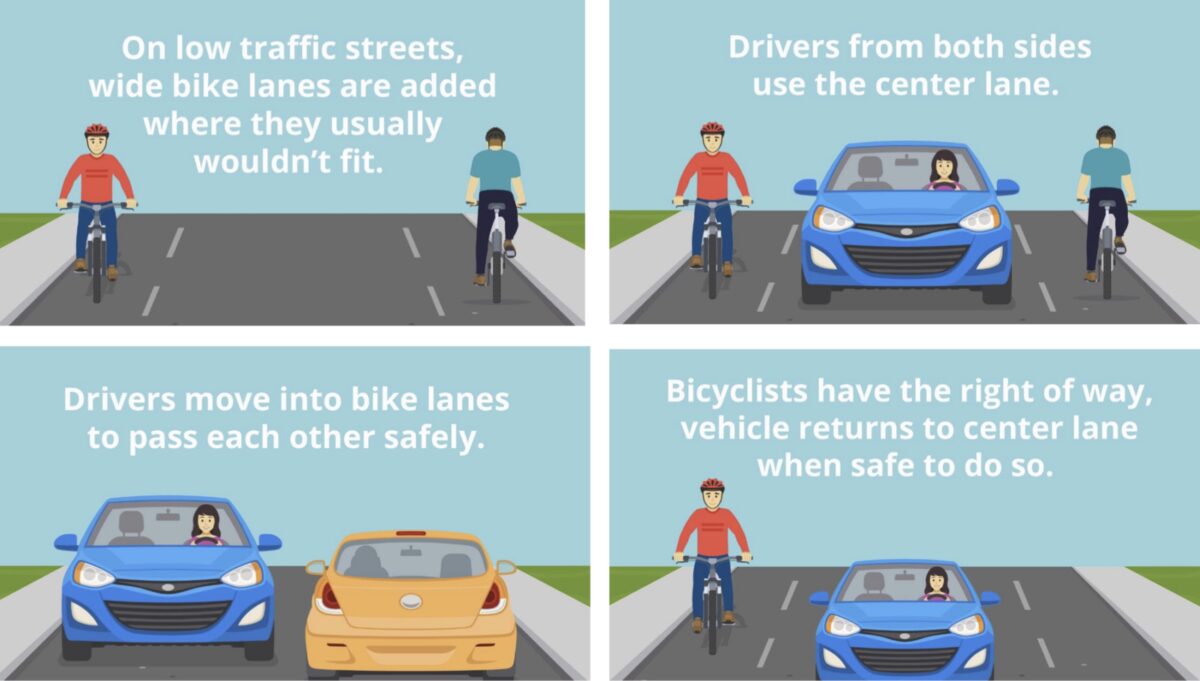
[ad_1]
The two installations of this rare treatment show the city’s willingness to innovate — and to trust all users to play nice. Photos and video by Jonathan Maus
What are city planners to do when they want to give cycling more priority on a street but don’t want to take the space needed for high quality, dedicated bike lanes?
The easiest solution is to do nothing, or maybe just add a sign or two that says “Bike Route”. The next easiest thing is to just plop down some sharrows, those “shared lane markings” that are widely loathed and really only work well as wayfinding devices (which is thankfully, how the Portland Bureau of Transportation most often uses them). But in a city like Portland we expect more. That’s where advisory bike lanes come in.
They’re sort of like traditional bike lanes; but drivers are allowed to encroach into them if no one is present. They’re an efficient way to use right-of-way and they do something Americans need more practice at: making judgments and sharing the road instead of always feeling entitled to a specific place on the road.
Passed as a top priority treatment in the 2009 Portland Bicycle Plan for 2030, PBOT is just now starting to get serious about them. Until recently there were only two examples — on SE Caruthers and NW Marshall — but neither of those are a textbook implementation. Caruthers is a dead-end with very little traffic and NW Marshall is an anomaly where PBOT striped a smooth bike lane on an old street that still has bumpy cobblestones.
As we first reported back in May, two new examples have emerged that are Portland’s best-ever attempts at true advisory bike lanes. They are located on NE 43rd north of Sandy and on NE 53rd over I-84.
As you can see in the video and photos (below), the design is relatively straightforward. These are bike lanes, but they have skip-striping to make it clear people can drive in them. The other key element is that there is no centerline (both of these streets carry two-way traffic). The idea is that bike riders will use these like traditional bike lanes and drivers are supposed to drive in the middle of the street when a bike lane is being used. If two drivers come toward each other and no bike rider is present, they can pass by each other while driving in the advisory bike lanes. If one bike rider is present, the drivers can shift to one side to pass. If two bike riders are present, the drivers will have to slow down and wait to pass each other.
Below is PBOT’s user-guide graphic followed by specific thoughts on the two new installations:
NE 43rd between Sandy and Tillamook
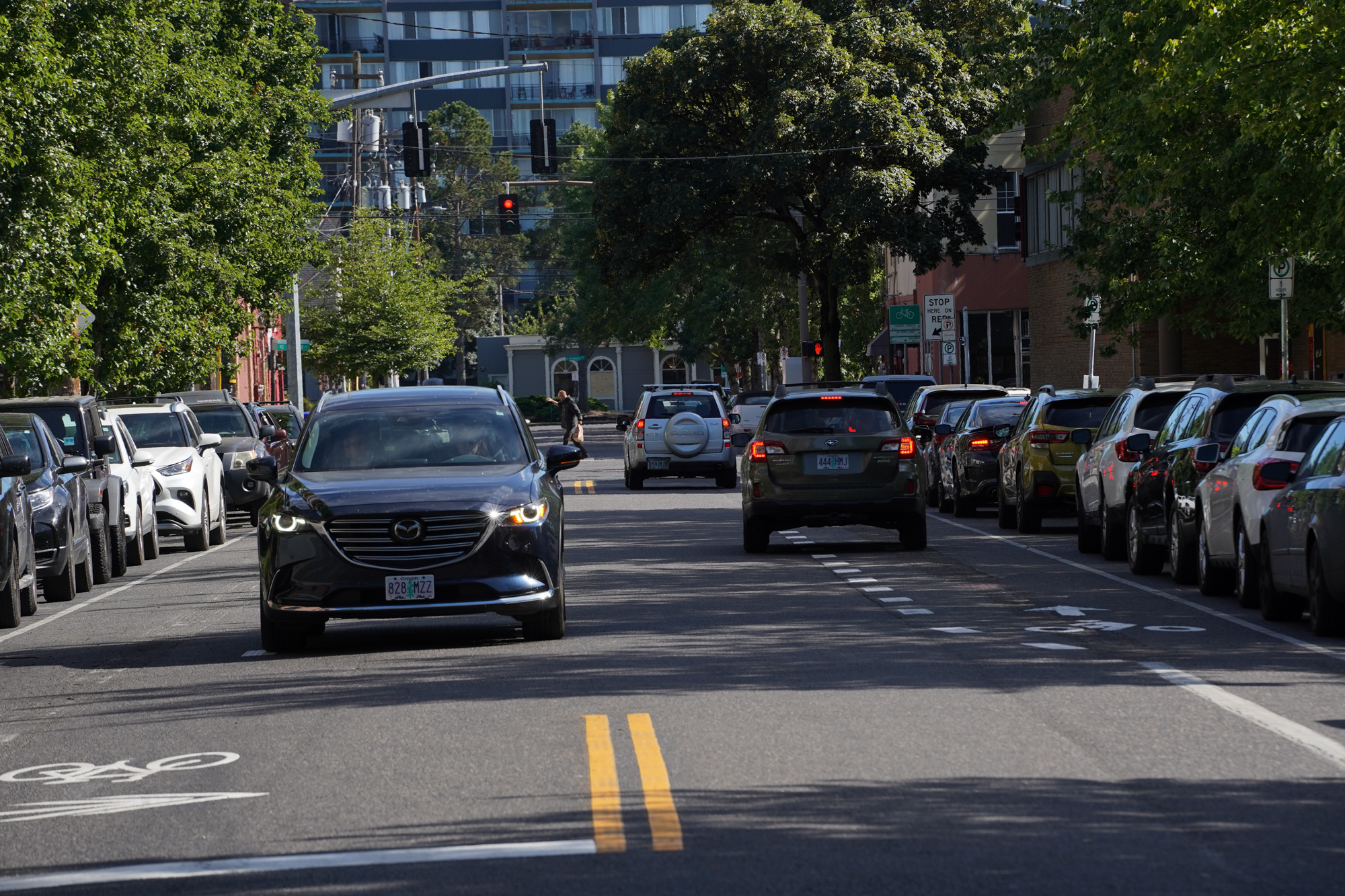
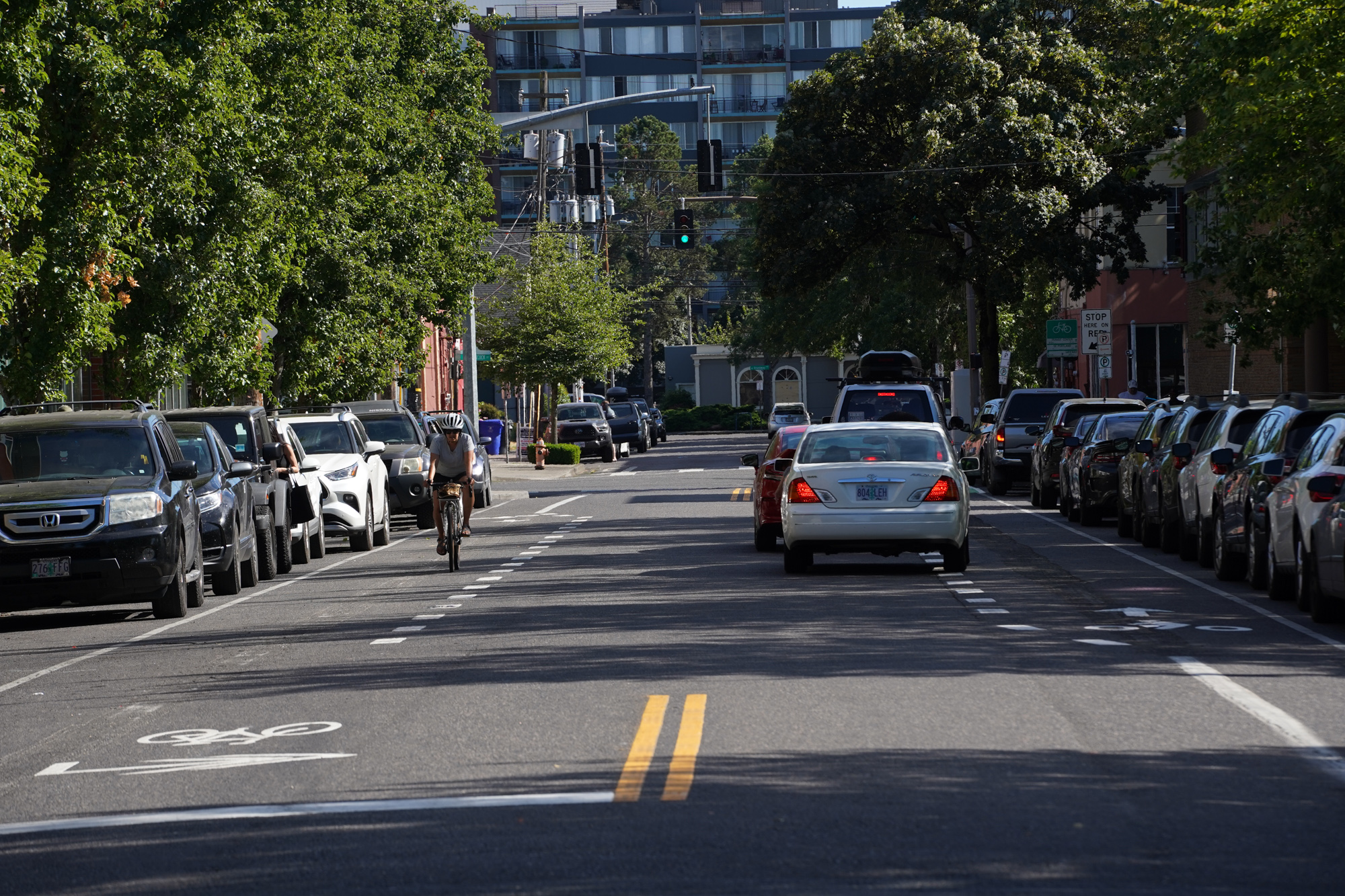

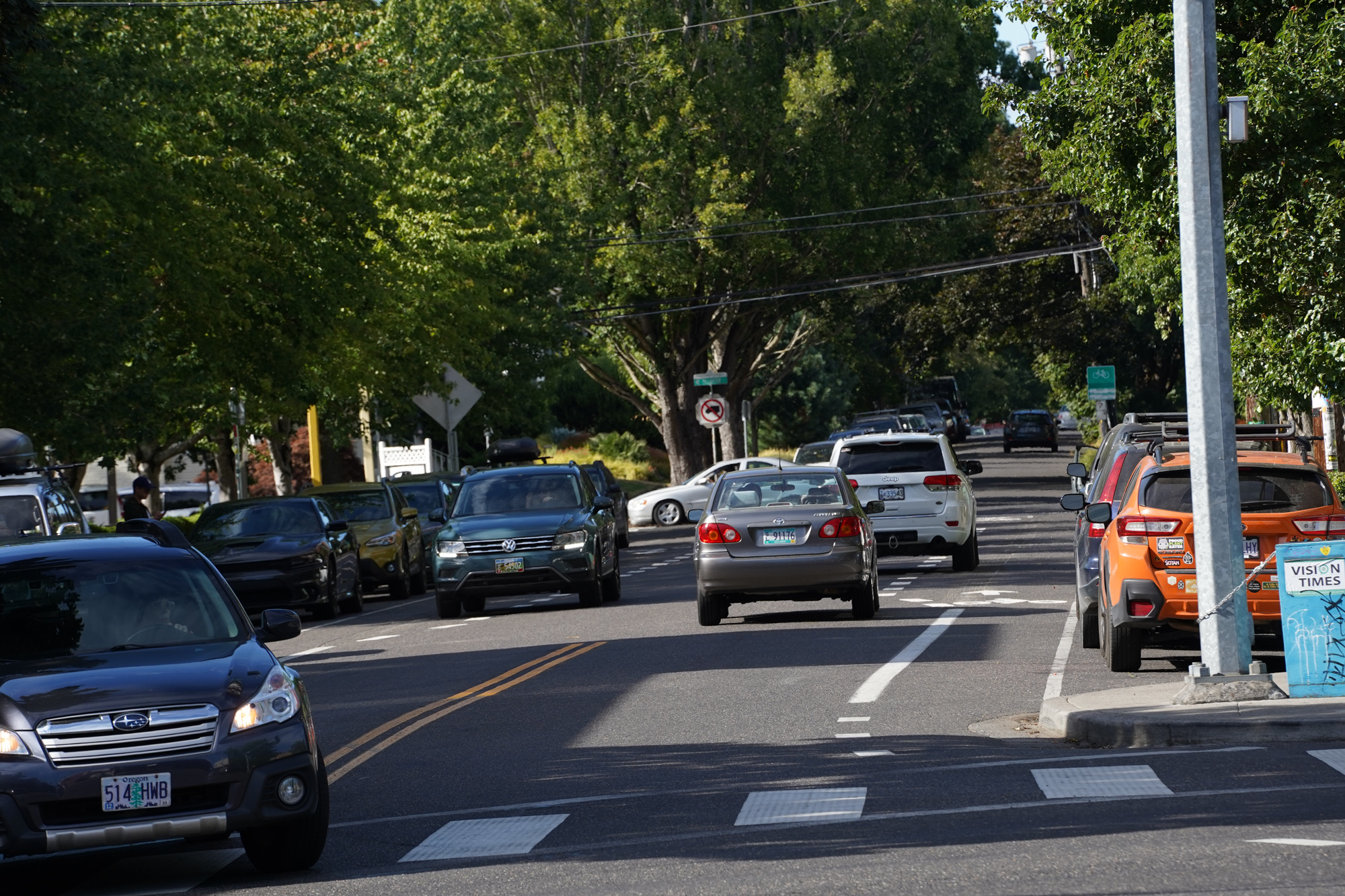
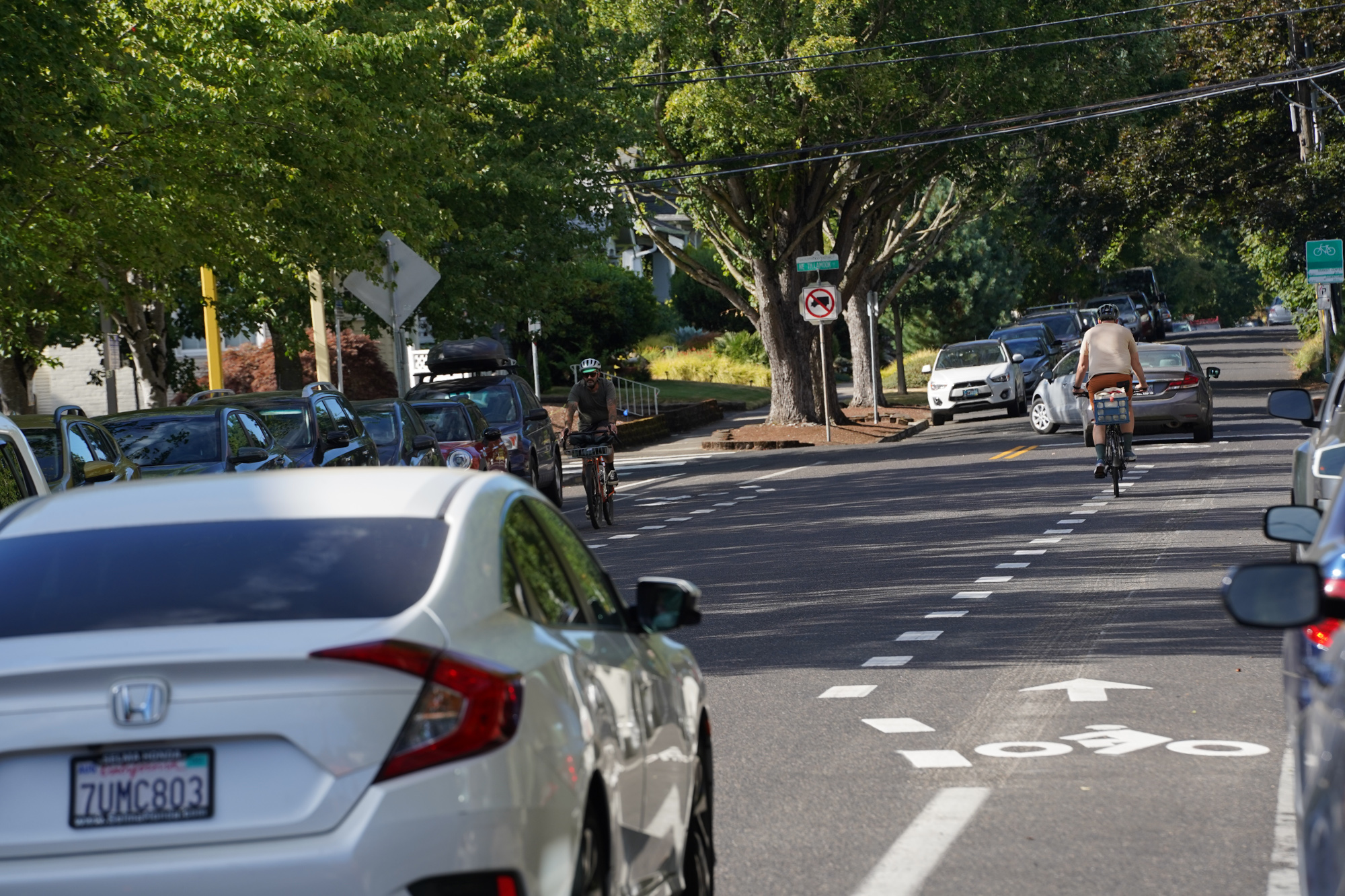
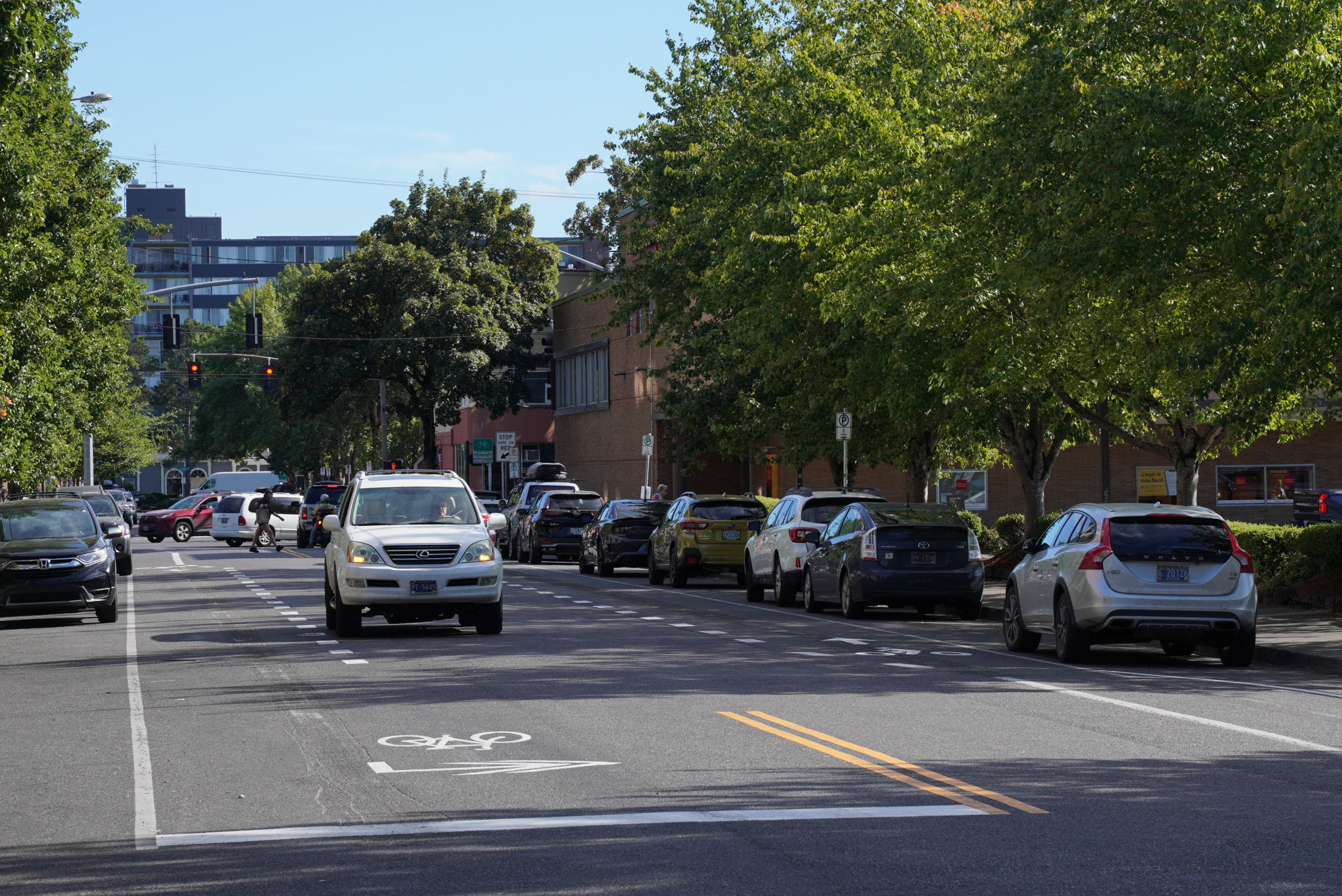
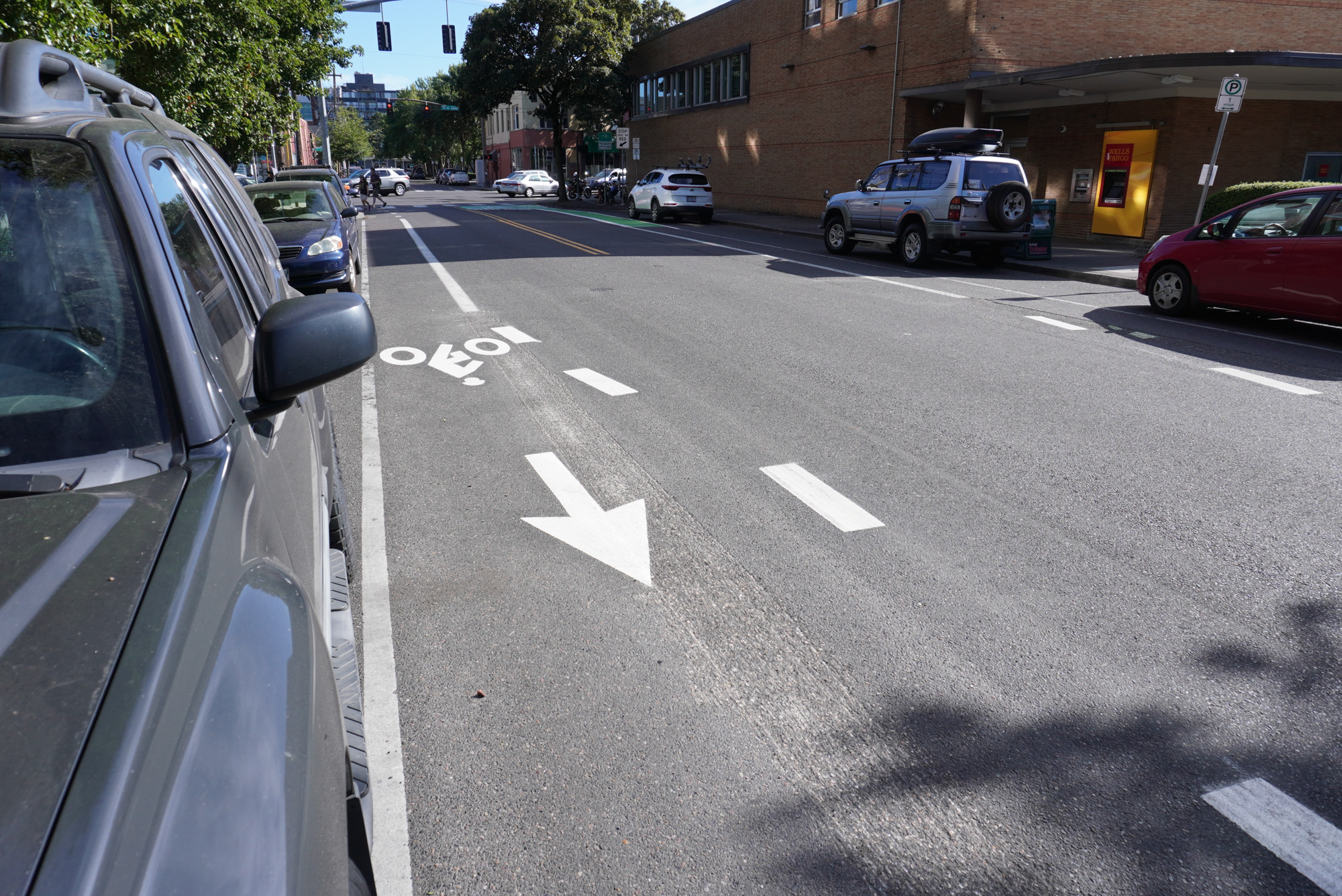
This is a very busy block, so kudos to PBOT for trying this treatment here! There’s a Whole Foods on one corner and very high parking turnover on both sides. When I observed a few days ago, everything seemed to work fine. Drivers drove in the middle when bike riders were present, and then took the full street width otherwise. Bike riders used the lanes as if they were standard lanes — and a potential added benefit of the broken paint stripe is that it encourages bikers to get further from the door zone. To further establish this block as a cycling space, PBOT has striped a traditional bike lane and added a bike symbol at the start of each block. They’ve also added intersection treatments (a sharrow/mixing zone and a bike box) to help riders transition beyond this one block.
NE 53rd between Hoyt and Irving (over I-84)
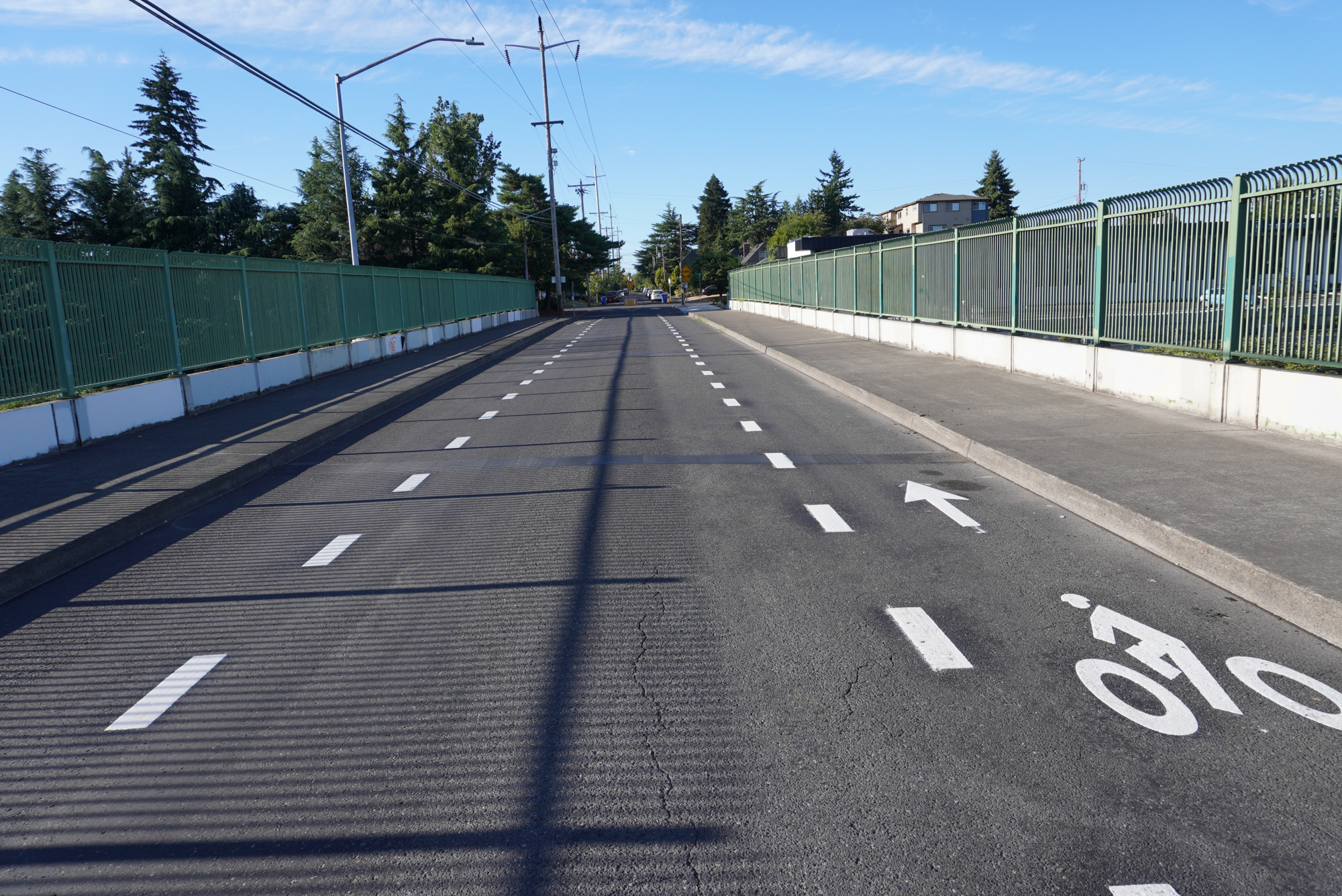


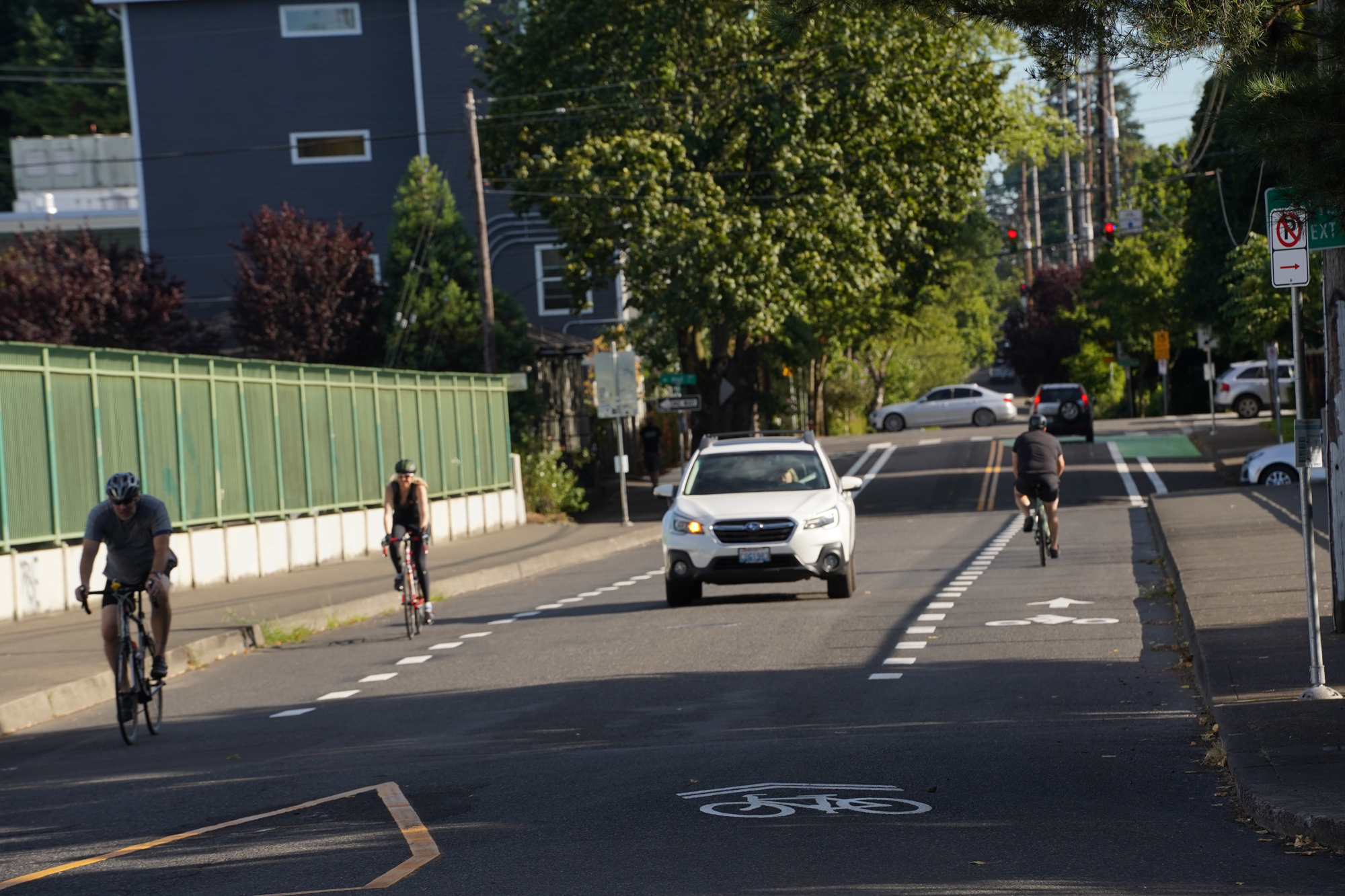
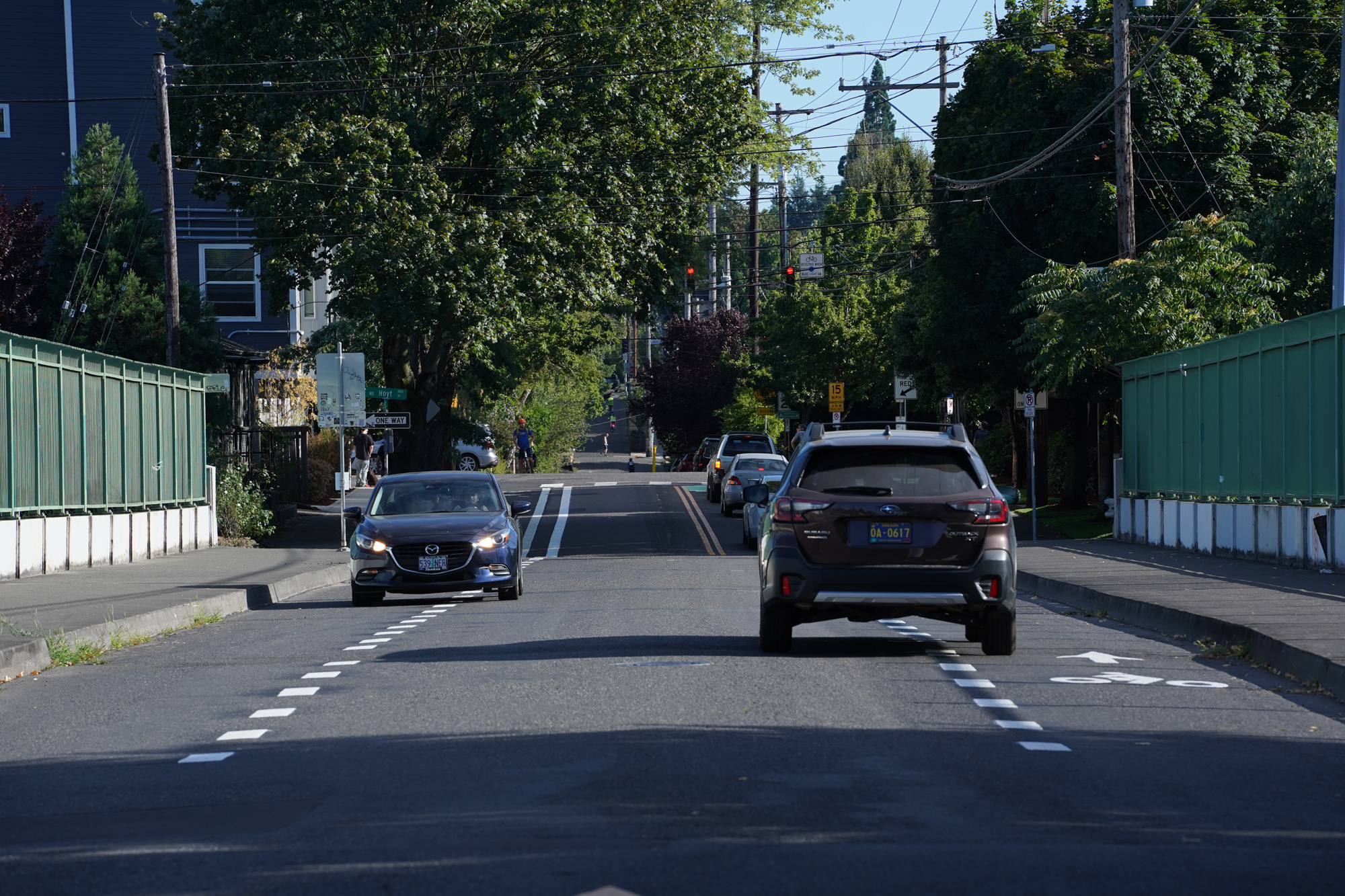

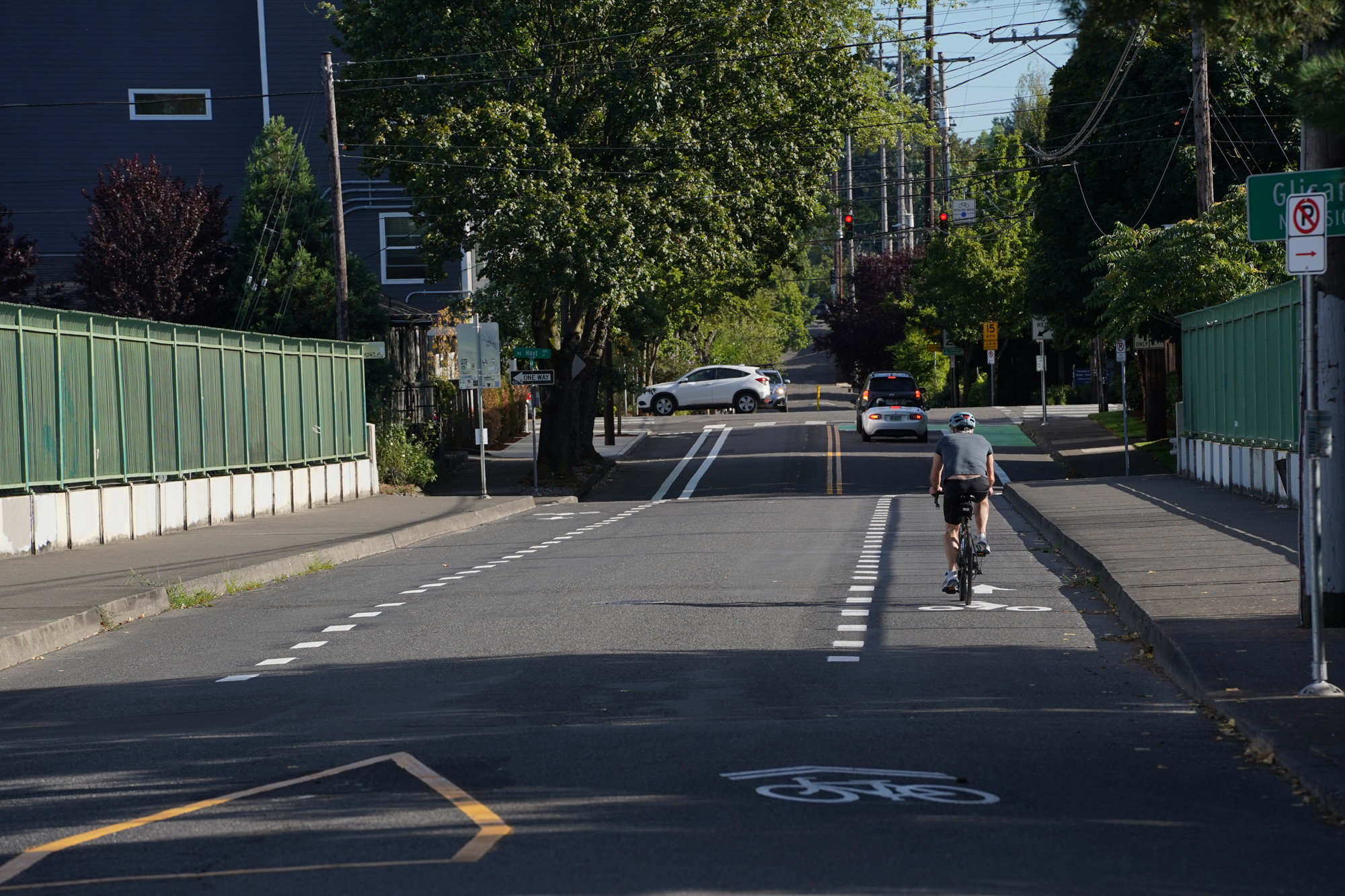
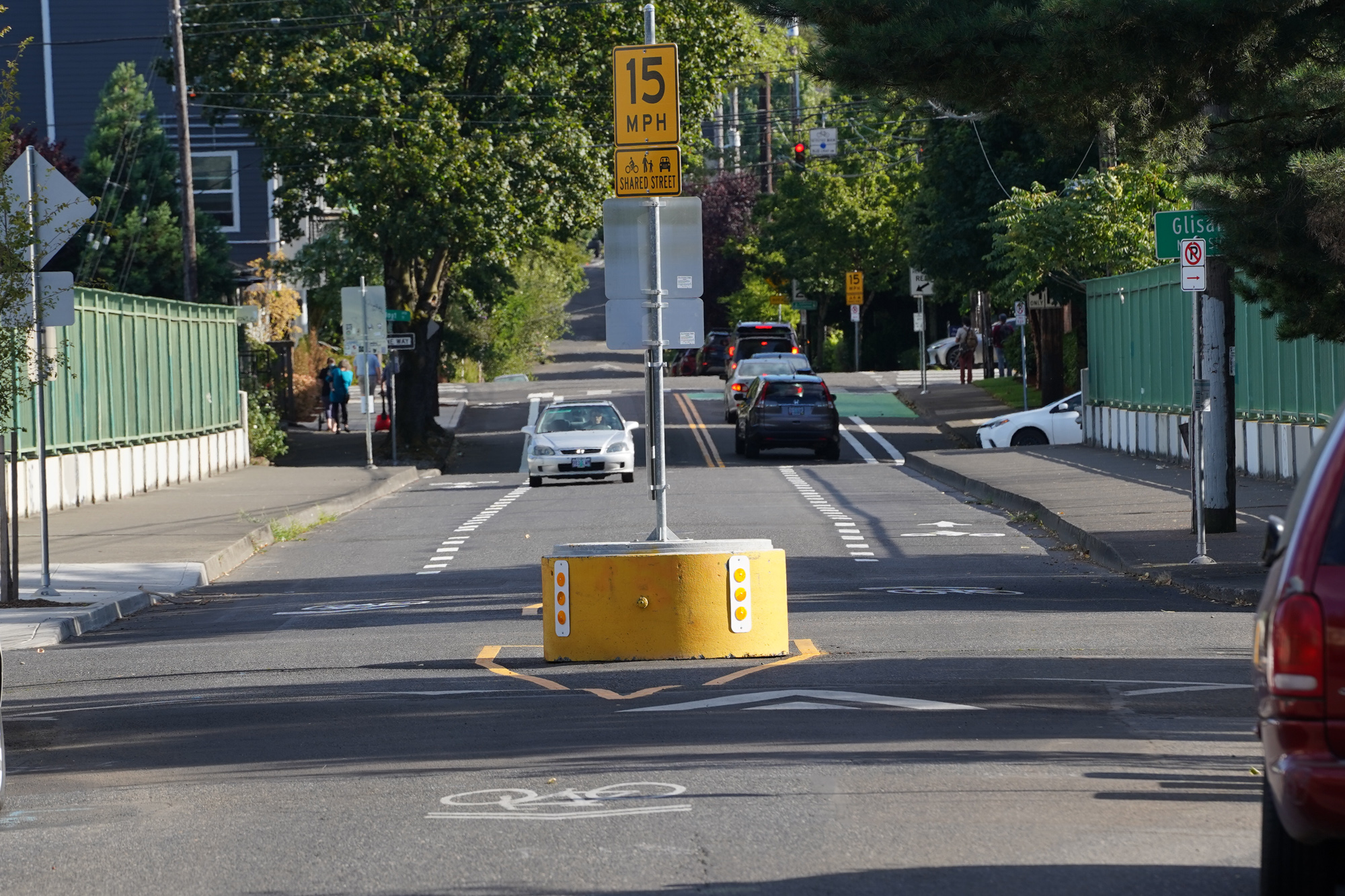
This is a key link in the bike network as a low-traffic and direct way to get across the freeway. In my observations, the advisory bike lanes worked well here too. I didn’t see any red flags in the half-hour or so that I watched. PBOT has strengthened the treatment by placing a concrete diverter and “15 MPH Shared Street” signage at the north side to further calm traffic and to make it clear this is a neighborhood greenway. The vibe on 53rd is much more relaxed and low-volume than 43rd. In some ways that creates less stress, but since the street is more wide open, drivers might behave worse more often (which is why the aforementioned diverter is so key).
Watch the video above or over on our (growing!) YouTube channel and check out the photos for a closer look. If you’ve ridden these spots, we’d love to know what you think.
Contact Jonathan at @jonathan_maus on Twitter, via email at maus.jonathan@gmail.com, or phone/text at 503-706-8804. Also, if you read and appreciate this site, please become a supporter.
[ad_2]

